“The skyscraper and the twentieth century are synonymous; the tall building is the landmark of our age,” wrote architectural critic Ada Louise Huxtable. From the Art Deco movement at the beginning of the 20th century to neo-futuristic styles of today, each skyscraper is a wonder of engineering that defines the skyline of the city. Designing a skyscraper is a dream of almost every architect, but we have selected several recent projects that are seeking to reinvent the modern skyscraper with higher, more cutting-edge designs.

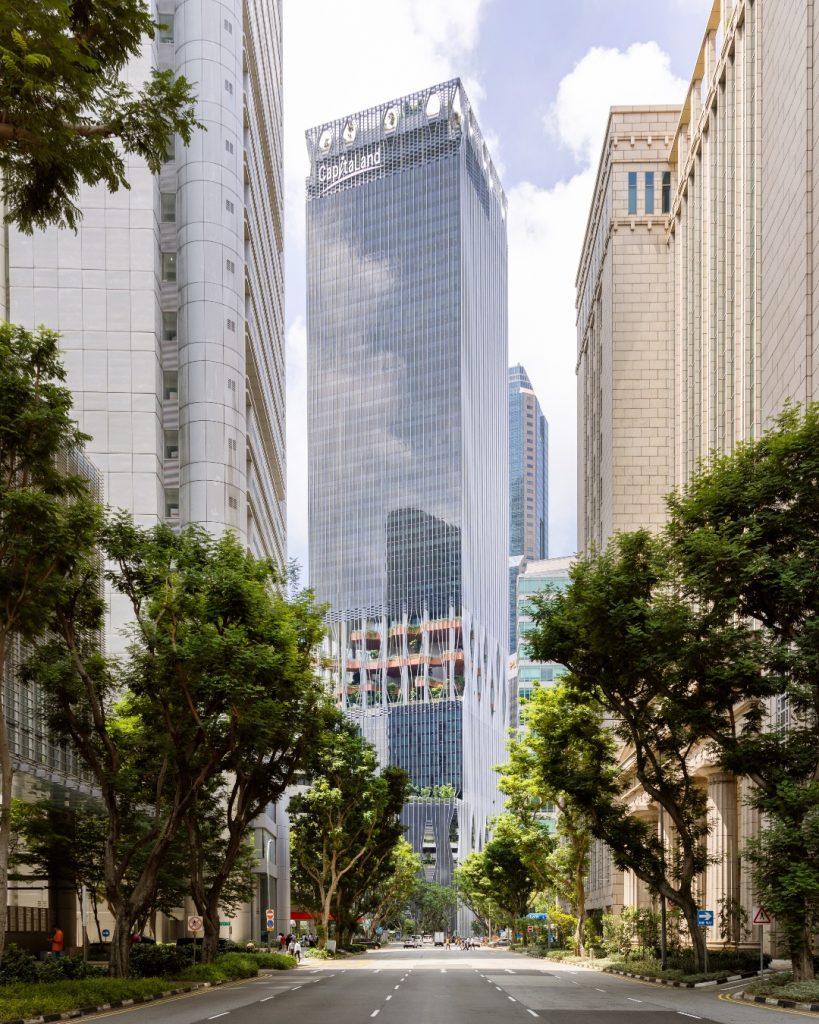
CapitaSpring by BIG and Carlo Ratti Associati
Following four years of construction architecture studios BIG and Carlo Ratti Associati have completed a 51-storey mixed-use skyscraper in Singapore designed to offer visitors a seamless transition between the garden and the city. This principle is articulated in the facades and a series of lush spiraling gardens connecting between various programs and filled with amenities representing a spectrum of use.
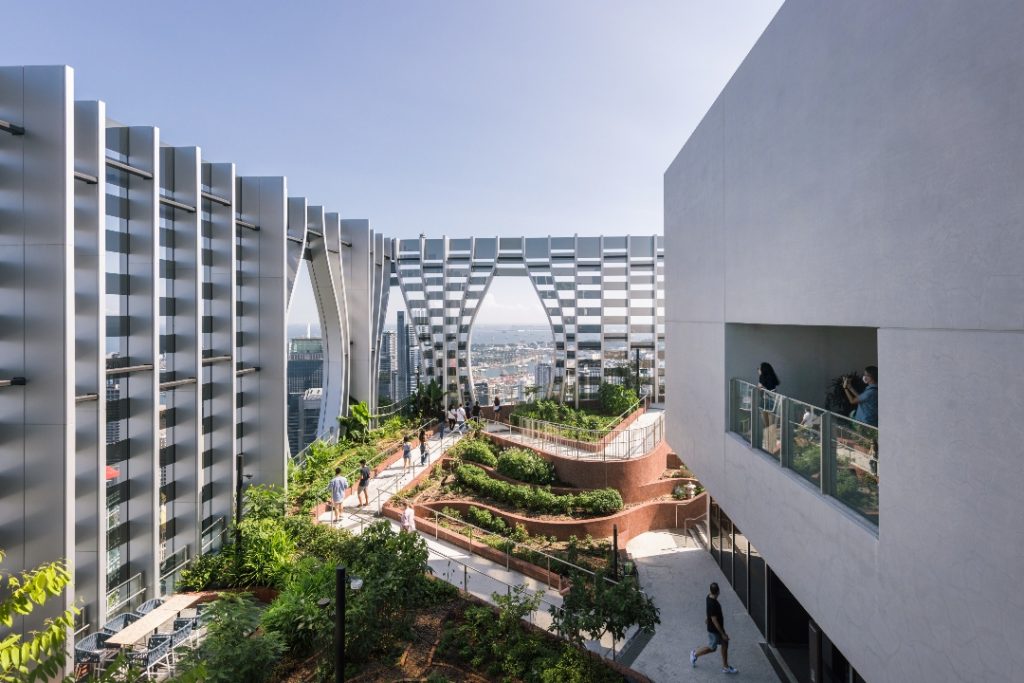
CapitaSpring by BIG and Carlo Ratti Associati
Located at the heart of Singapore’s financial district on the site of a former public car park and a hawker center, the biophilic CapitaSpring seeks to continue Singapore’s pioneering vertical urbanism with the 280m tall diverse neighborhood of places to work, live and play inside as well as outside.

CapitaSpring by BIG and Carlo Ratti Associati
The building’s appearance is defined by a dynamic interplay of orthogonal lines, lush greenery, and contrasting textures, with multiple green oases blooming from the base, core, and rooftop “sky garden.” In addition to the abundant sky-gardens and rooftop park, the high-rise includes premium office space, a hawker center, restaurants and public spaces. The tower’s rooftop garden, with views of the city, is home to Singapore’s tallest urban farm where over 150 species of fruits, vegetables, herbs, and flowers, are grown across five thematic plots to supply the rooftop restaurants with fresh greens.
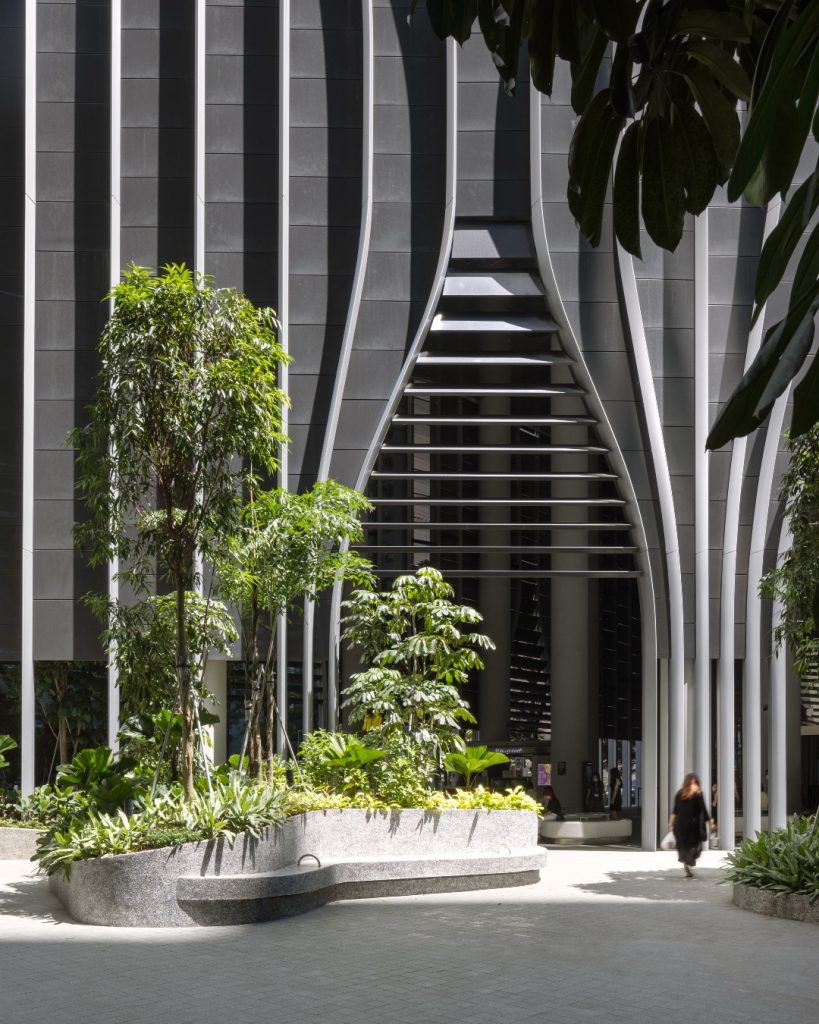
CapitaSpring by BIG and Carlo Ratti Associati
Meandering garden paths create natural entryways into the City Room, an 18-meter-high generous open space at the foot of the tower that creates shelter from the tropical sunlight and showers and welcomes tenants into separate lobbies for the offices and residences.
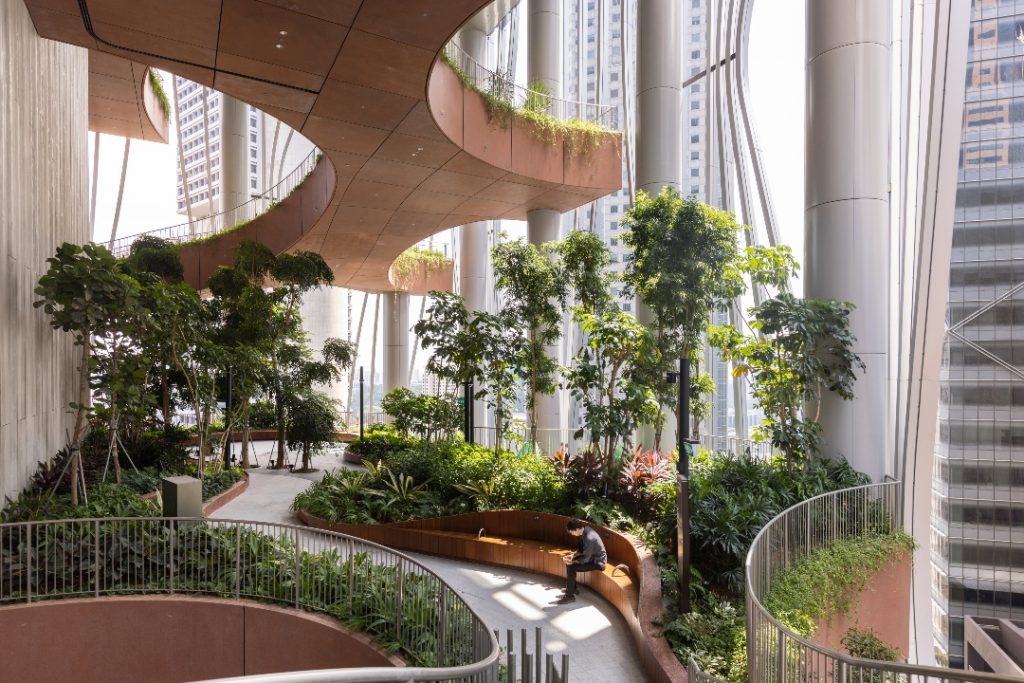
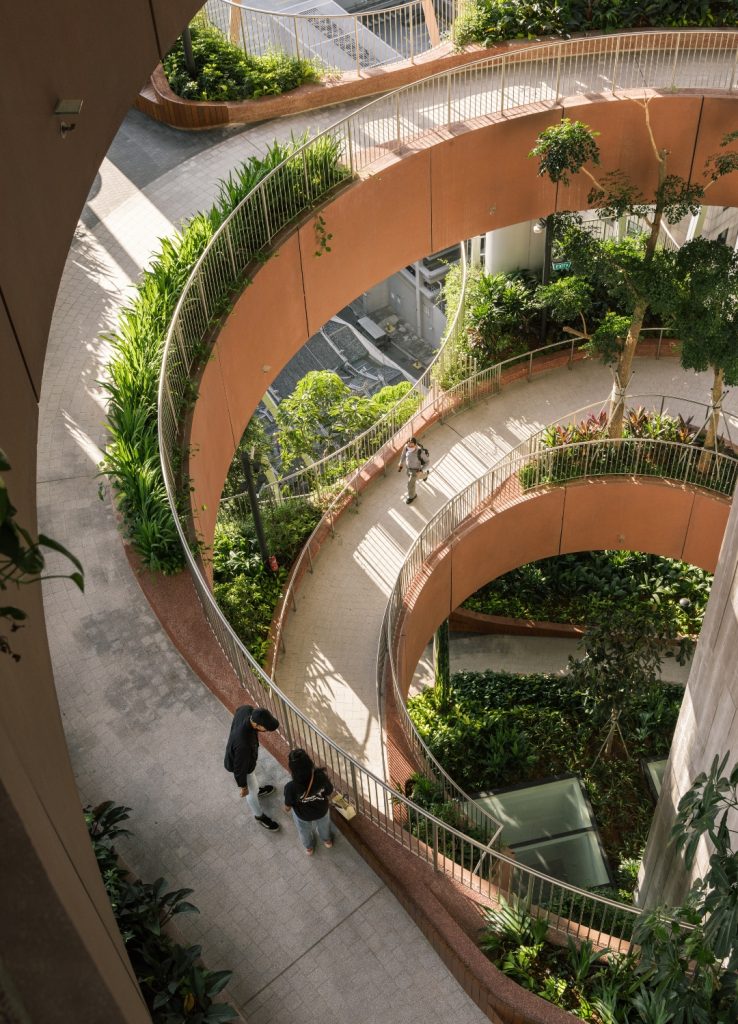
CapitaSpring by BIG and Carlo Ratti Associati
At the core of the building are four connected levels of organic softscape dubbed the “Green Oasis” – a 35m open-air garden for work, casual strolls, relaxation, exercise, and events. The Green Oasis seamlessly weaves nature vertically into the architecture and satisfies the spatial limitations of the locale while granting tenants and residents abundant access to green spaces – animating the elegant smoothness of modern architecture with the ubiquitous tropical nature of the region.
In this way, the tower reinforces Singapore’s reputation as a garden city, housing over 80,000 plants.

Pan Pacific Orchard by WOHA
Another green skyscraper in Singapore is Pan Pacific Orchard, a 23-storey 350-room “garden hotel” designed by the local architecture studio WOHA.
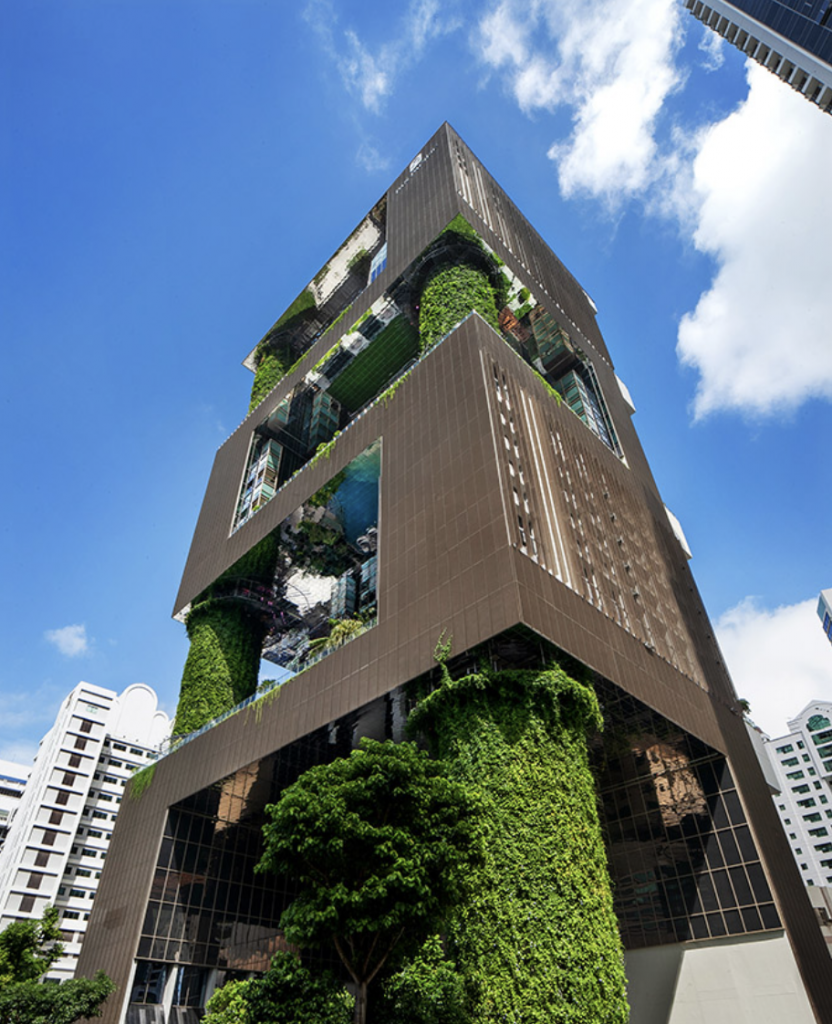
Pan Pacific Orchard by WOHA
To overcome the limited site area, the design stacks 4 distinct strata with three Sky Terraces inserted as elevated grounds with amenities surrounded by gardens. The guest rooms are split into three stacks configured in L-shaped stacks overlooking either the Sky Terraces or city.

Pan Pacific Orchard by WOHA
The first stratum is designed as a Forest Terrace featuring a water plaza and cascades and edged by forest trees, creating a dramatic entrance and a memorable urban connection. The second level is conceived as a Beach Terrace, offering guests a tropical oasis, with meandering sandy beachfront and palm groves around an emerald lagoon.
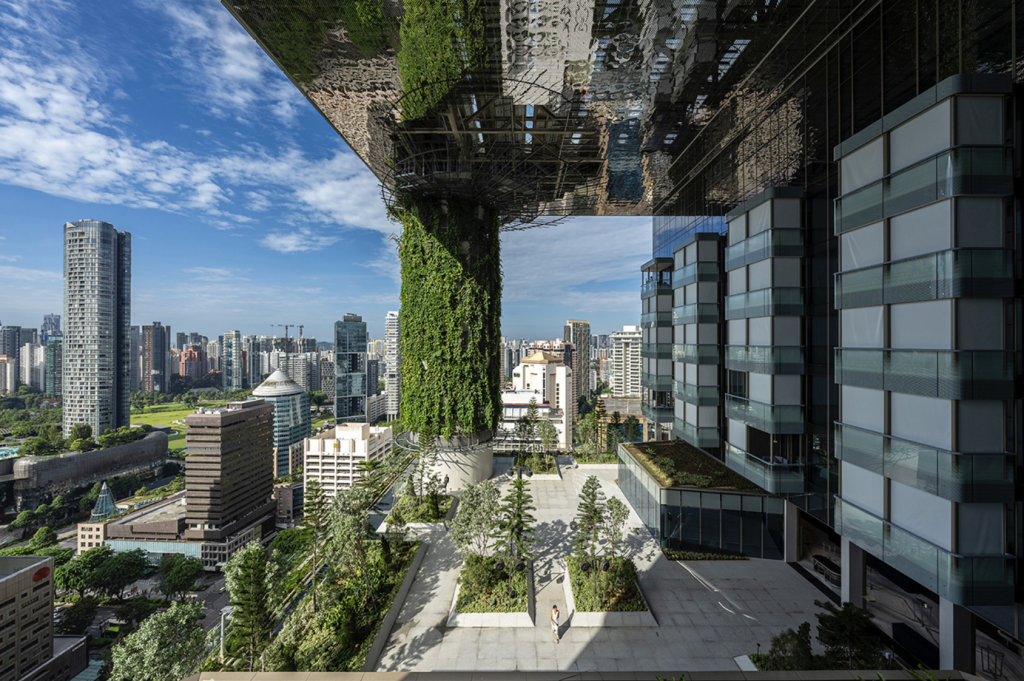
Pan Pacific Orchard by WOHA
The third stratum is set up as a Garden Terrace that showcases a manicured garden, complete with verandas, lawn, fountains and garden, while the fourth one is envisioned as a Cloud Terrace comprising of a 400 seat ballroom and event lawn, surrounded by thin mirror pools and filigree planting, naturally lit through the PV roof canopy.
The four levels are visually connected by huge living green columns, endowing the urban hotel with a resort feel.

Terrarium Cheong-Dam by ODA (also header image)
Similarly, a large sky garden filled with plants will be the focal point of Terrarium Cheong-Dam, a 45-storey skyscraper that New York based architecture studio ODA is designing in Seoul, South Korea.
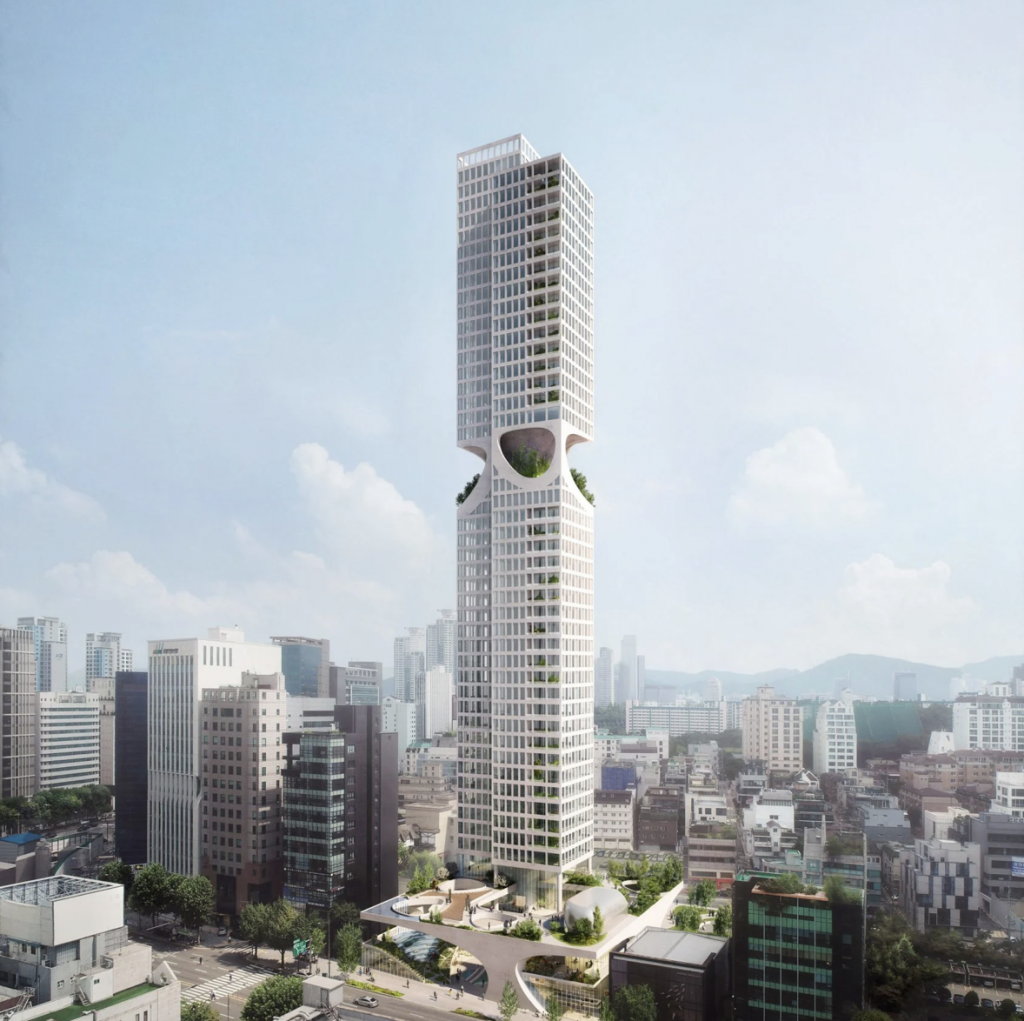
Terrarium Cheong-Dam by ODA
The area, previously known as Chungsutgol, means “clear pond,” referring to a clear, blue pond that once existed before the neighborhood’s development. The neighborhood’s name and history served as inspiration for ODA as the firm proposed a tower with nature at the forefront of its design.
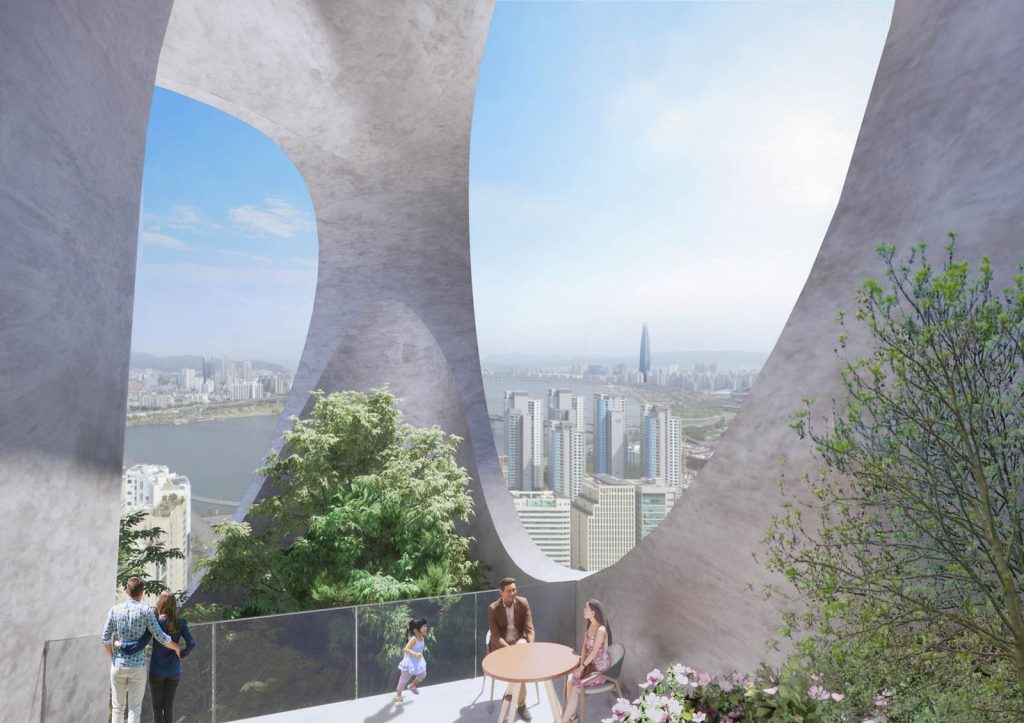
Terrarium Cheong-Dam by ODA
Measuring 200 metres in height, the tower will contain a mix of residences and offices. The concrete tower includes a membership club in the basement, a highly accessible and porous public park and retail space at podium level, office space and high-end residences.
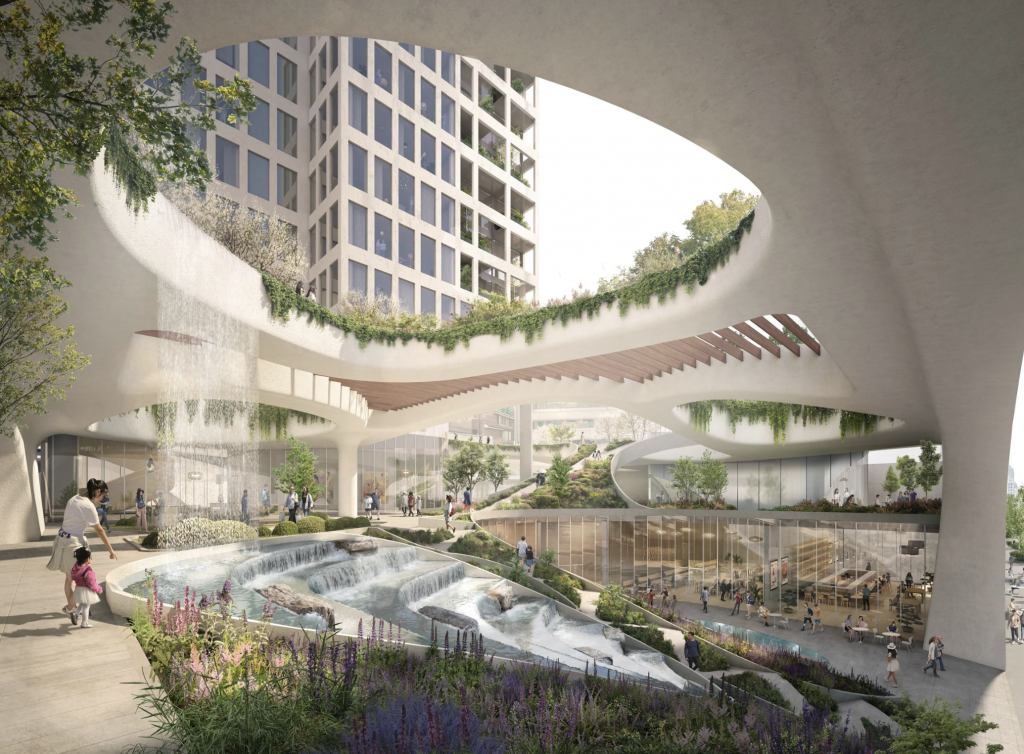
Terrarium Cheong-Dam by ODA
The podium level is a two-story structure that’s completely open and accessible to the public, featuring multiple access points to a public park with lush landscaping, a water feature, sculpture gardens and an indoor gallery space. Located on a site with hills, the park uniquely uses the natural topography to bring visitors to different levels.
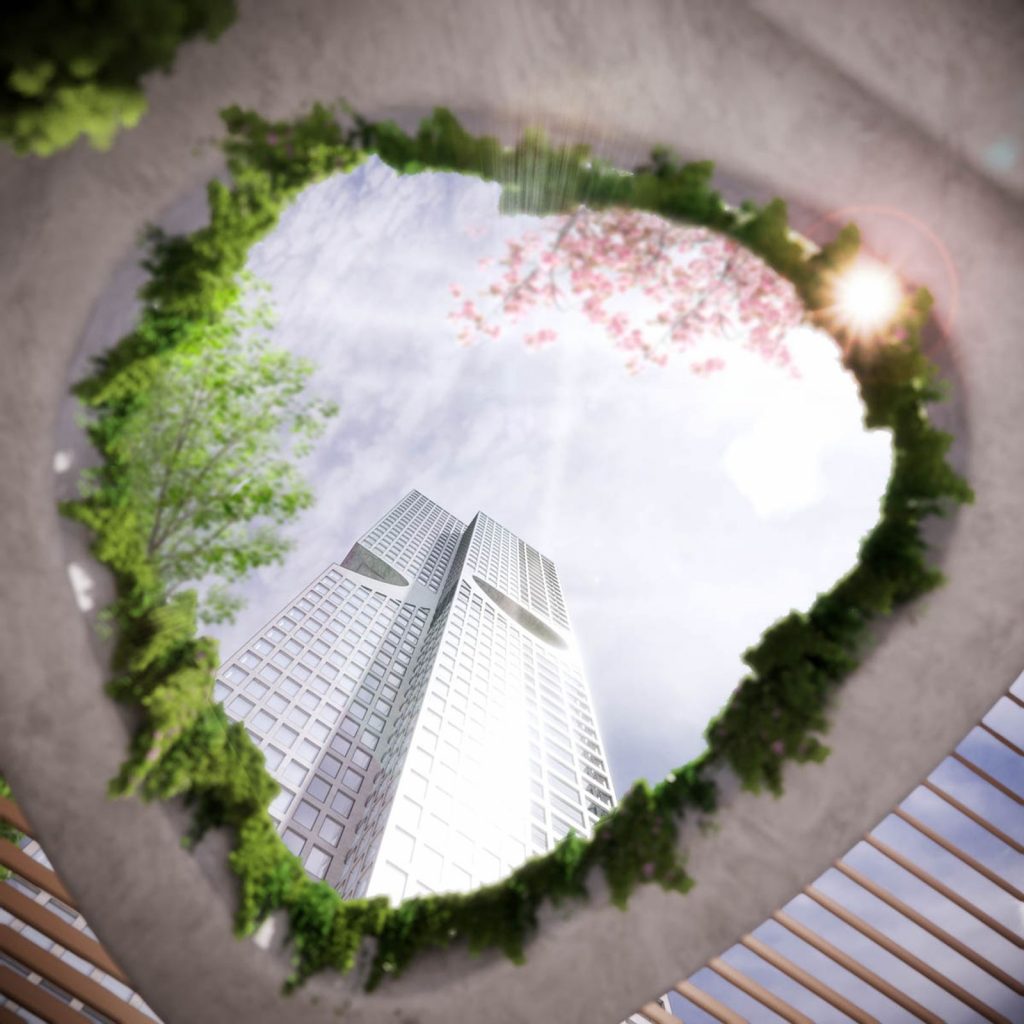
Terrarium Cheong-Dam by ODA
Cheongdam-dong is located south of the river and known for its high-end retail and views of the water and surrounding mountains. By incorporating multiple entrances into the public park, the tower is meant to serve as a connection point to multiple neighborhoods and commercial districts.
By designing the public podium level to be open, inviting and accessible, the team hopes to make the high-rise be more attractive to residents, tenants and passersby, as well as foster a greater sense of connection between the community and the city of Seoul.